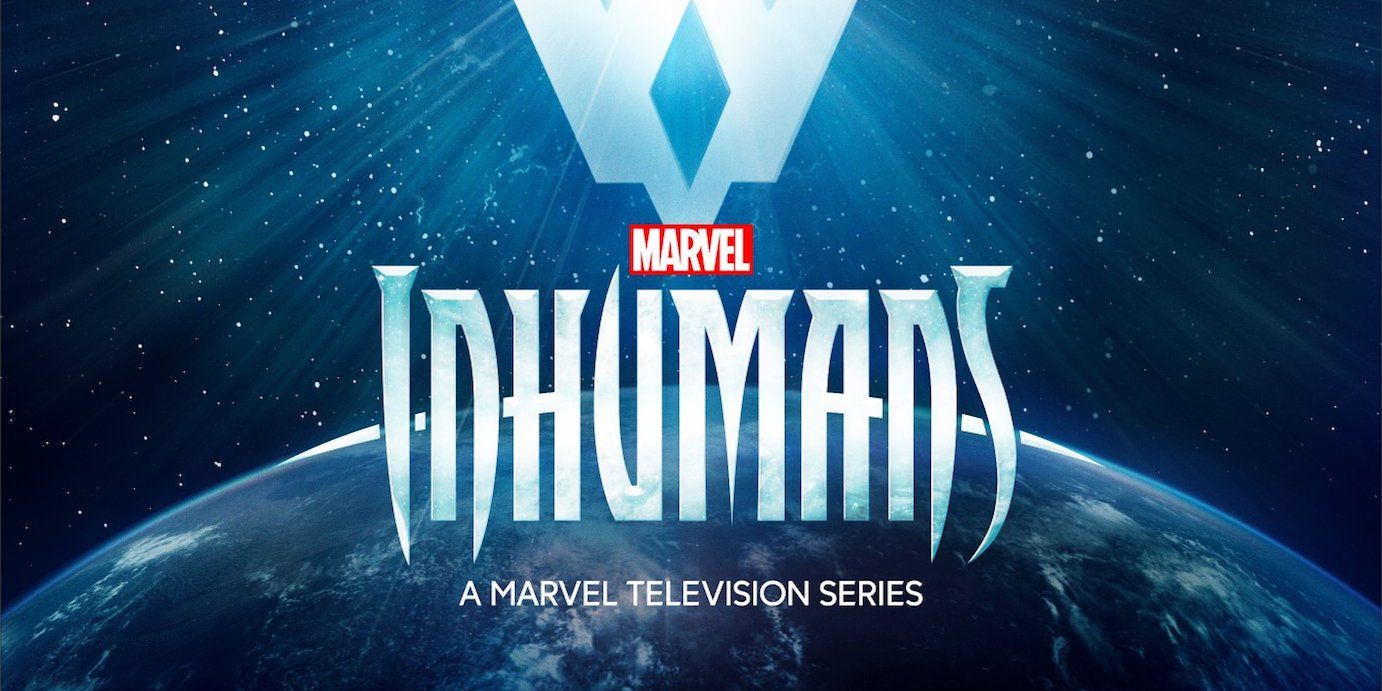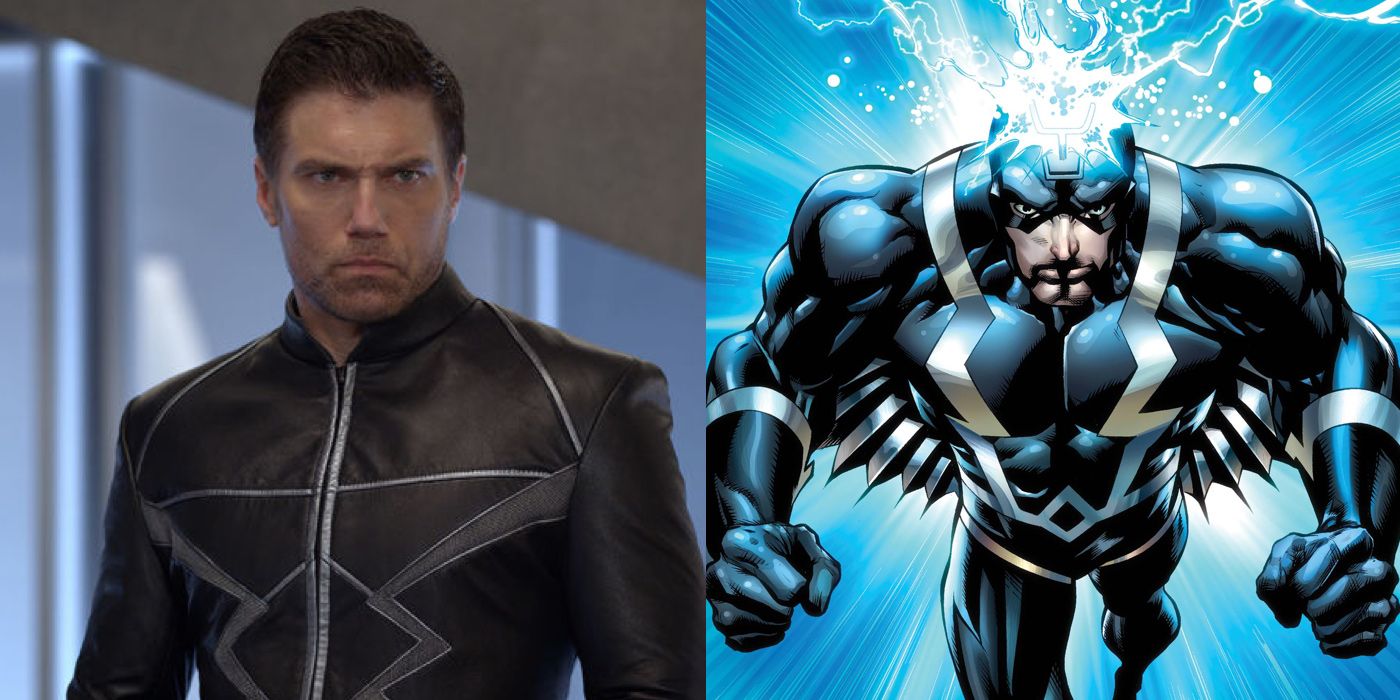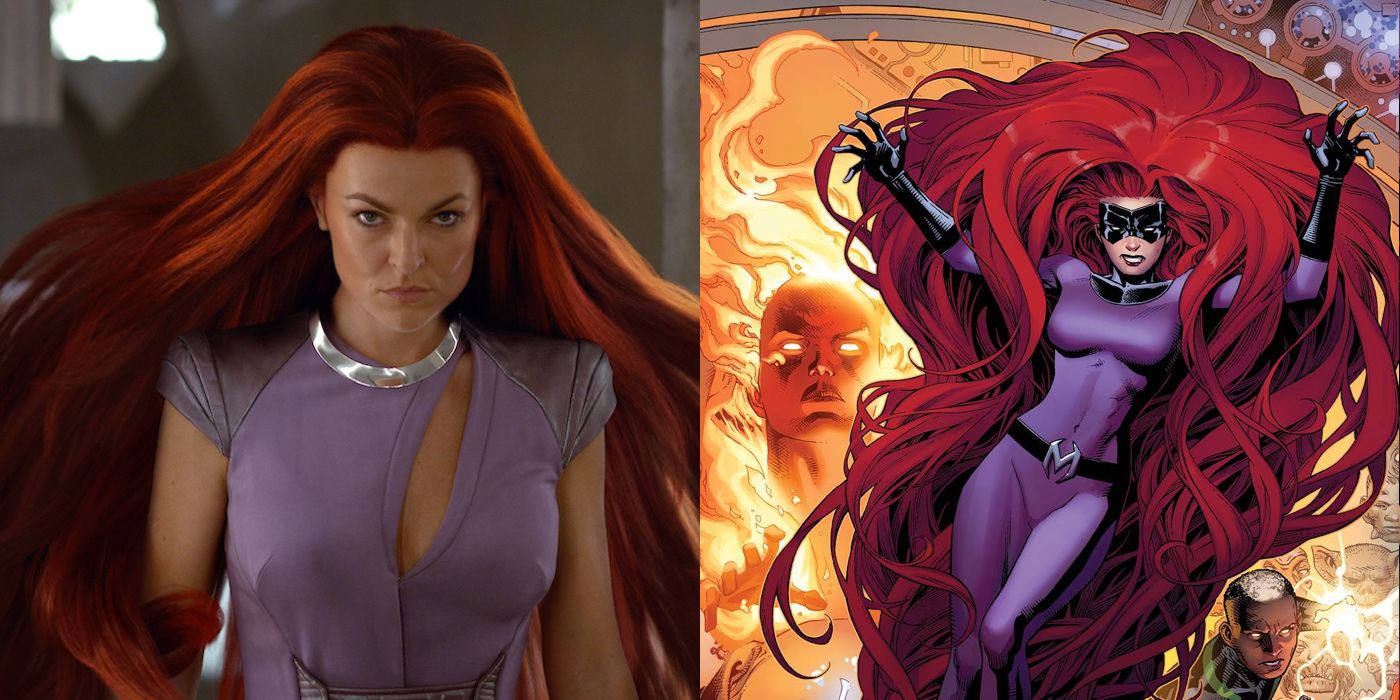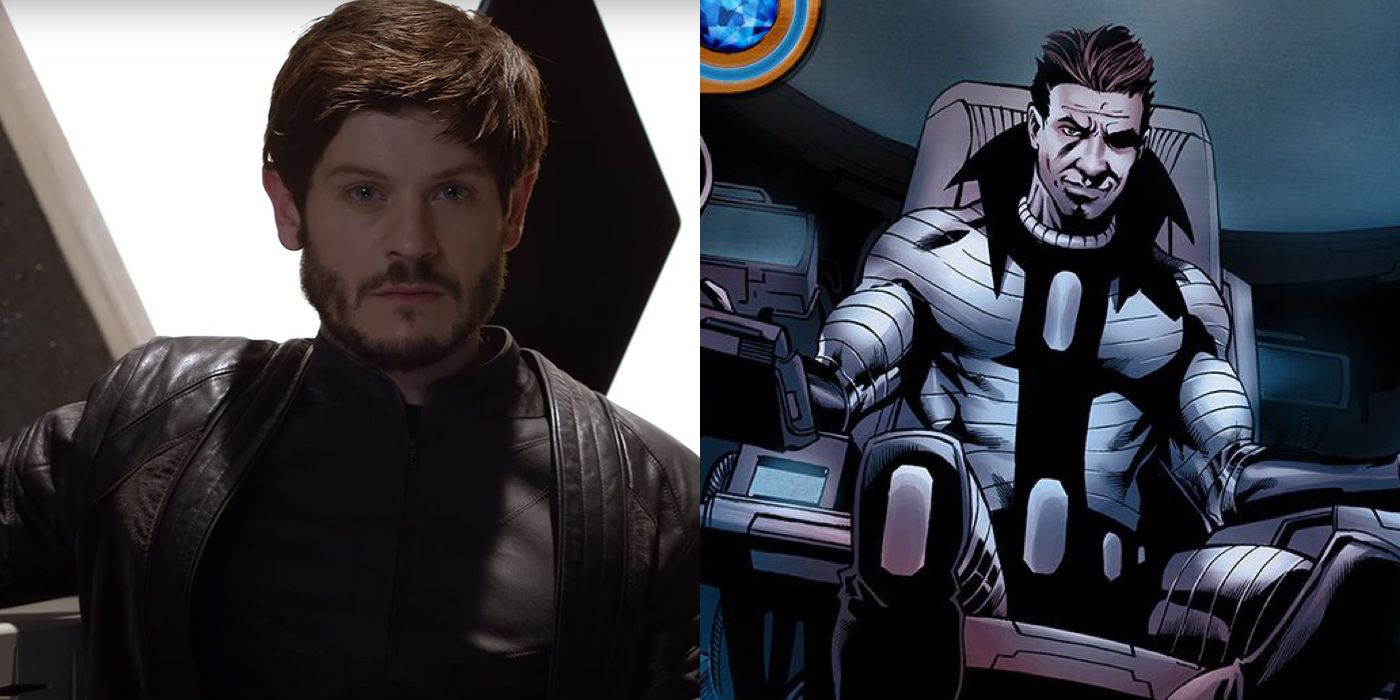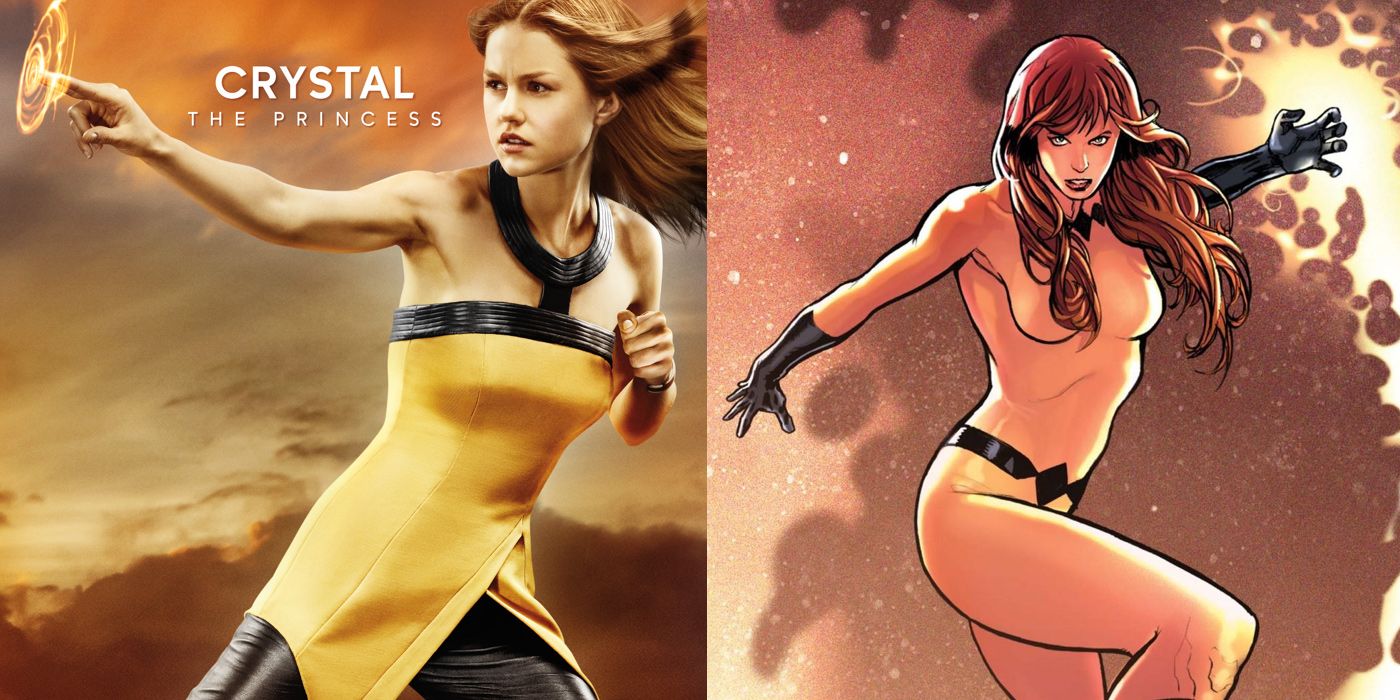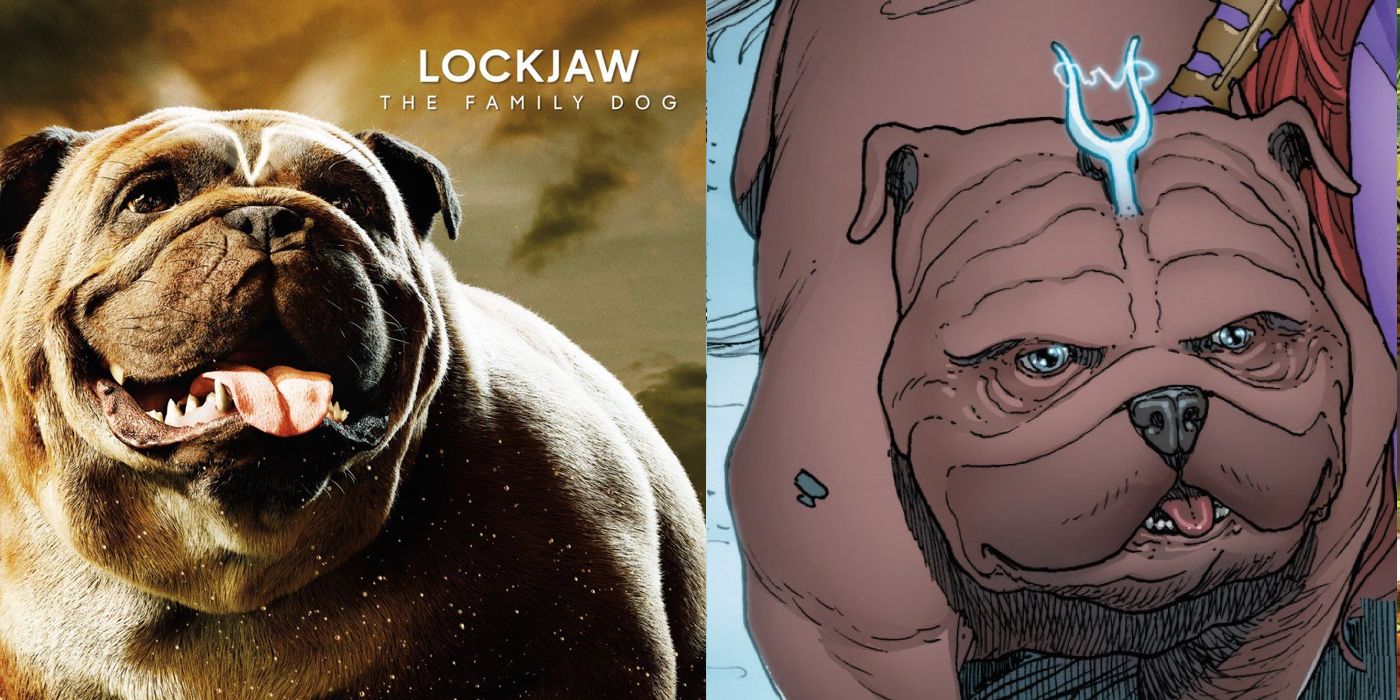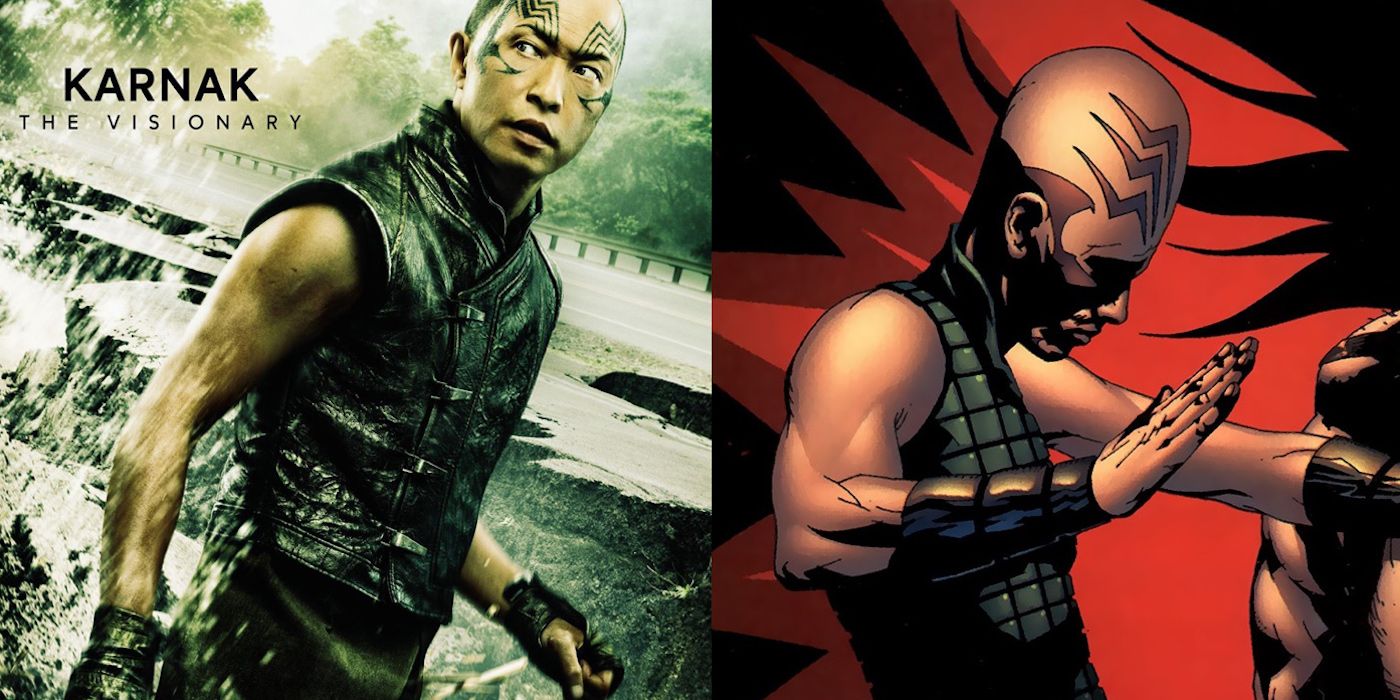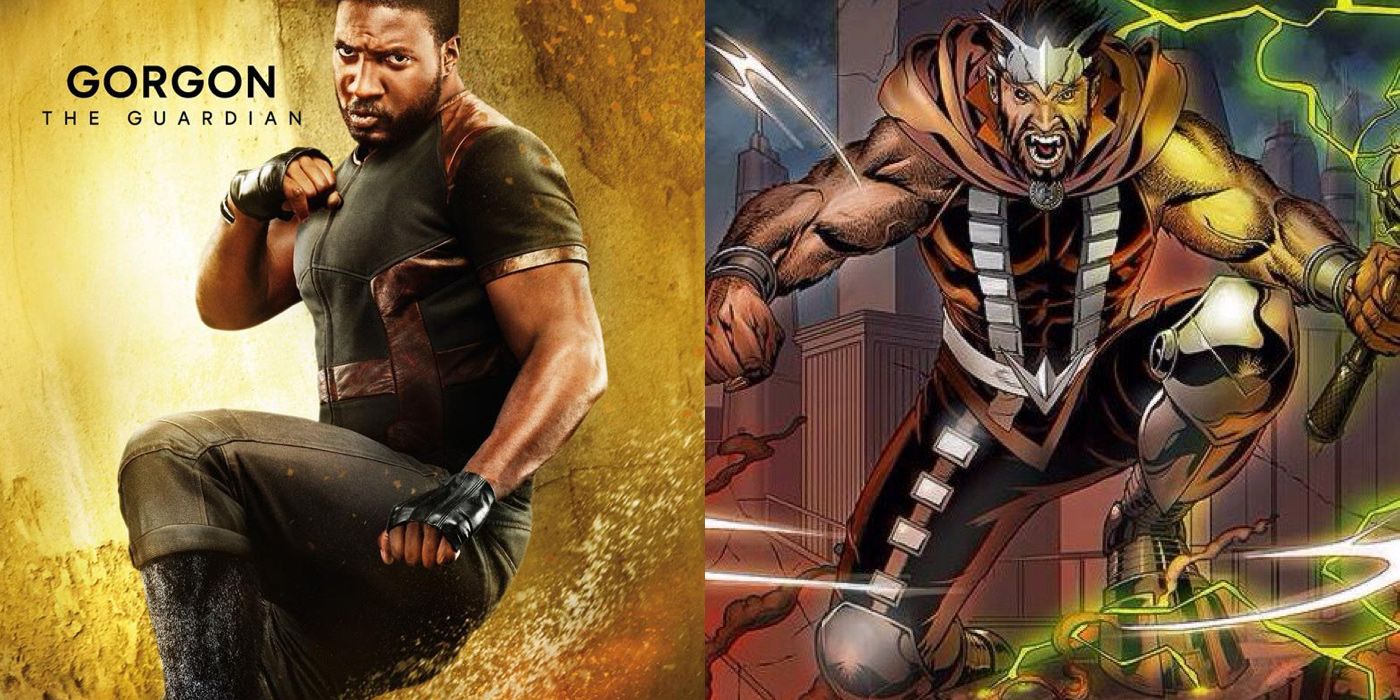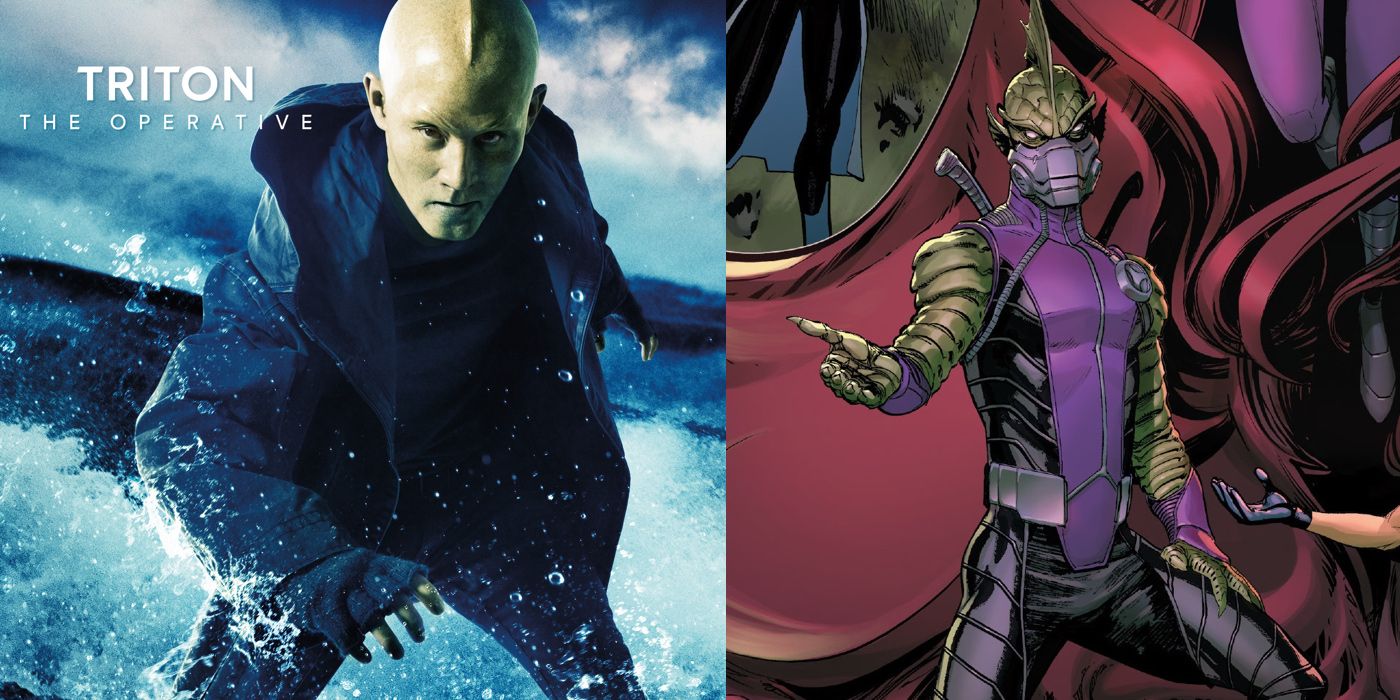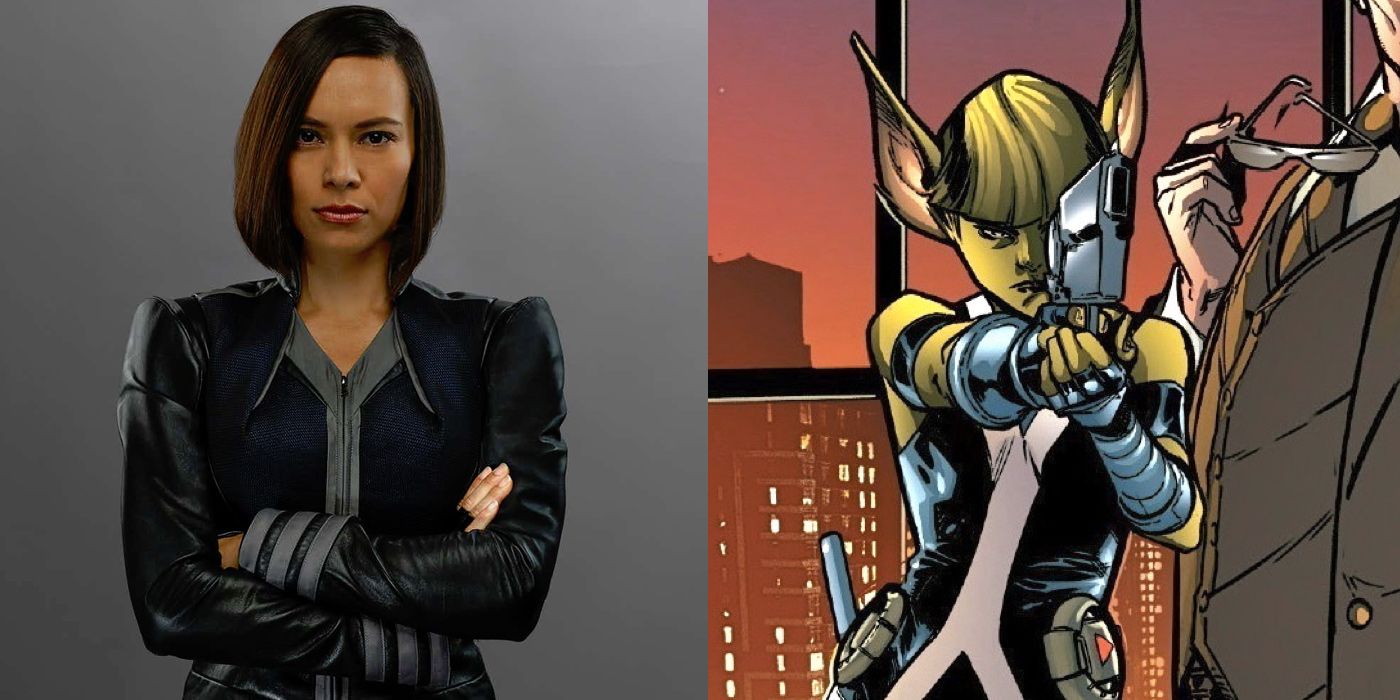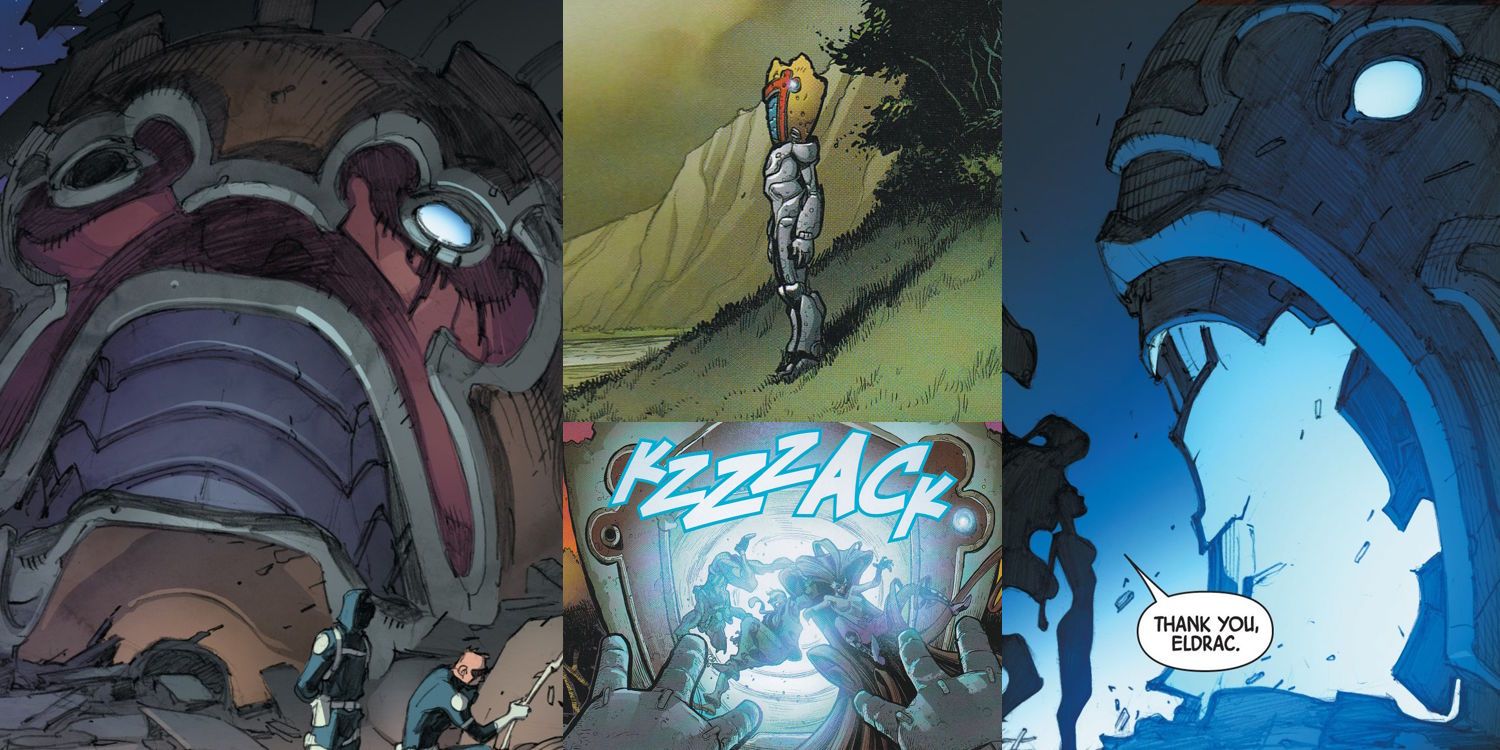Spoilers for the first two episodes of Inhumans
-
With Marvel's Inhumans finally in IMAX theaters, one of the most questionable products of the MCU can now be properly scrutinized. We've already made our thoughts clear on its narrative and visual shortcomings in our review of the two-hour premiere, but there's plenty more to dive into when it comes to the adaptation.
Ever since Marvel decided to change the proposed film to a television series, questions have arisen about how well the characters, powers, and settings of the Royal Family could be transposed to the television format. While the medium certainly opens up storytelling possibilities and the IMAX assistance seemed to indicate a sizable budget, the series ends up falling short in both areas.
Part of the translation issue has to do with the way the characters are reworked for the series. And while all superhero properties have to alter things from the comics for film or TV, the MCU has generally done a good job of keeping their heroes and villains engaging while updating them for the new universe. When it comes to Inhumans, however, how well do the characters stack up to their comic book counterparts?
Black Bolt
Selling Inhumans will be challenging enough to general audiences without diving into the weeds of the various character histories. As such, some streamlining makes sense. That's why it's likely for the best that King Black Bolt is never referred to by his real name, Blackagar Boltagon. Created by Jack Kirby and Stan Lee, Black Bolt first appeared in 1965's Fantastic Four #45. The child of the current rulers of Attilan, Black Bolt is exposed to the Terrigen Mists while still in the womb”something highly unusual. While all Inhumans undergo a transformation during the process, Black Bolt's early exposure gave him extraordinary power, allowing the merest sound he utters to wreak devastating havoc. As a result, he's a walking nuke who must keep his emotions in check.
As played by Anson Mount, there's little nuance to the character. The sell was always going to be a hard one, as all an actor can do is use facial expressions. Mount added a form of sign language, but the result is flimsy as Medusa translates for the audience what Black Bolt's family would surely understand. Mount also wears a stripped down version of the character's costume, removing some of the fantastical flair from the comics. His abilities also come off as somewhat laughable, including a scene not from the source material where a teenage Black Bolt explodes his parents during a tantrum.
Medusa
Queen Medusalith Amaquelin Boltagon, better known as Medusa, first appeared as a member of the villain group the Frightful Four in 1965's Fantastic Four #36. She was later revealed to be the queen of the Inhumans, having suffered a form of amnesia which led to her going rogue for a short time. A distant cousin of Black Bolt, the two have been in love since they were young, with Medusa being one of the few people to interact with the powerful prince. Like Black Bolt, she's part of the royal bloodline. Her abilities are her wild tangle of prehensile hair, which she can control and extend to unknown lengths.
Most of Medusa's key traits are kept for the series, those she's said to be unrelated to Black Bolt or the royals and is instead part of a lower caste. Her hair also is markedly less powerful and is easily nullified with a generic electric razor. Though she later shows some of her signature skill in battle, the Medusa from Inhumans is greatly deprived of the sense of power and command she exudes in the comics.
Maximus
Debuting two issues after Black Bolt, Maximus is the Loki to the Inhuman King's Thor. The younger brother of Black Bolt, Maximus was also exposed in the embryo to the Terrigen Mists. The results saw his intellect greatly expanded and some psychic powers manifested as he aged. A genius inventor and technologist, Maximus uses his mind to constantly undermine his brother and the rest of Attilan. Dubbed Maximus the Mad, he's often a Joker-like character who's kept around due to his blood connection to the king.
Perhaps undergoing one of the most drastic changes from the comics, the Maximus of Inhumans is a rather bland villain. Not only does he lack the genius and foresight of his comic book counterpart, but his backstory is changed so that his Terrigenesis renders him genetically human.
This is perhaps one of the oddest changes the show makes, as the lower caste system of Attilan is full of people who are somehow unmade as Inhumans. Because of this, there's nothing particularly special about Maximus, and his lack of psychosis results in an undercooked antagonist. He pitches himself as a bit of a revolutionary, but it's shown early on that virtually no one respects him. That's what makes it all the more shocking when he somehow convinces all of the royal guards to turn against their rightful rulers and follow him as he attempts to bring the Inhumans to Earth.
Crystal
When it comes to sheer costuming, Crystal might be the most true-to-source-material adaptation of a comic book character. Her outfit and hair are both strikingly similar to various iterations from the page, and promotional material has shown her mastery of the four classical elements will stay intact. Sadly, none of her powers are displayed on the show. She's mostly relegated to the role of a teenage pawn who simply orders Lockjaw where to go. Given that she's probably the second most powerful Inhuman after Black Bolt, this is fairly disappointing.
Crystal first appeared along with Black Bolt in the comics, and is the younger sister of Medusa. Her control over fire, water/ice, air, and earth make her a powerful warrior, but much of that has been removed from the show. Hopefully, she'll get more time to shine in the coming episodes, but fans should at least be happy that they nailed the character's look.
Lockjaw
Like Crystal, Lockjaw is pitch-perfect when it comes to the comics. He's also one of the few instances of CGI in the series that actually work. It's clear that a good portion of the budget went into making the character, and his lighter presence is certainly a highlight.
In the comics, there's been mystery about whether Lockjaw is an Inhuman or just a dog with powers, and the show seems to lean towards the teleporting dog angle. Still, there's no explanation of how he has these abilities. Lockjaw arrived with the other Inhumans in 1965 and is often seen with Crystal. His only major alteration for the show is his Black-Bolt-like tuning fork is turned into the Royal Family crest seen around Attilan.
Karnak
Karnak has inspired legions of fans since his debut alongside Black Bolt and the other Inhumans. And despite Ken Leung in the role, Scott Buck's writing renders the character unlike anything seen on the page.
In the comics, Karnak is unique among the Royal Family for having chosen to not undergo Terrigenesis. Instead, he hones his mind and body to allow himself to see the flaw in all things. This makes him a tactical genius and martial arts master, capable of shattering structures with one tap of his finger.
In the show, however, he's presented as a standoffish jerk, with the writers clearly trying to emulate Sherlock. The results are unimpressive, however, and his one fight scene is laughably bland. He's also shown to have powers, but the show never makes clear exactly how they work. He appears to have some sort of algorithmic HUD that lets him map out possible scenarios, but the whole thing is presented in a way that will surely leave new audiences thoroughly confused. A later scene where he slips and falls and seems to lose his powers due to a concussion is guaranteed to upset fans of the warrior.
Gorgon
Gorgon is the bright spot of Inhumans, with a rye wit brought to life by Eme Ikwuakor. Like in the comics, he's a cousin to the Royal Family and the leader of the royal guard. He's also a cocky warrior always eager for a fight. His transformation grants him satyr-like legs with powerful hooves that can create powerful seismic waves. While his costuming is a bit different from the comics, he's still a fairly faithful adaptation of the Gorgon from the page, who actually appeared an issue before most of his other family members.
Triton
Triton is the brother of Karnak and the reason the latter Inhuman doesn't undergo Terrigenesis. Triton's transformation turns his skin green, adds a sizable fin to his head, and requires him to live underwater or use a breathing apparatus. Still, he's a formidable warrior and a gifted swimmer.
On the show, his fin is toned down and he can operate normally on land. He's also a sort of emissary on Earth, collecting offshoots of the Inhumans who have undergone Terrigenesis thanks to the events from Agents of S.H.I.E.L.D. His early disappearance in the pilot sweeps this connection aside, but that could change if he returns. Hopefully, we'll also see some scenes of him at home underwater.
Auran
Auran isn't actually a member of the Royal Family, but she's one of the few other Inhumans from the comics who's adapted for the show. Created by Charles Soule and premiering in 2014's Inhumans #7, Auran is quite different from the page. There, she has yellow skin and large ears that are connected to her Inhuman power. Beyond just good hearing, Auran can sense the utterance and location of any word she has her mind set on. This power leads to her becoming the lead detective of Attilan and a trusted advisor to Medusa when she assumes the rule on Attilan follow Black Bolt's ouster after the events of Infinity.
Removing much about the character from the page, the show presents Auran as a lackey of Maximus who can heal herself. Why such a radical departure was chosen is unknown, but luckily her turn as a villain packs more menace than Maximus' approach.
Eldrac
Another Inhuman not part of the royal line, Eldrac was created during Jonathan Hickman's Fantastic Four run not long ago. His transformation turns him into a massive stone-and-metal head who can transport people where they need to be through his mouth. Along with Lockjaw, he allows the Royal Family to travel great distances.
On the show, Eldrac's power is made to hurt him, or so we're told. Without his point of view, we're never given a deeper look at what's meant to be a humanizing character trait. The Inhuman is also turned into a wall with a Zordon-like face that appears. Again, the design is rather uninspired, but his function as a transporter and existence as an extra peculiar Inhuman are kept intact.
-
Over the next few weeks, much will be made about what went wrong when it comes to Inhumans. But one of the core issues is that the show ignores what makes the characters interesting. Changing costumes, backstory, and powers is par for the course when adapting comics to screen, but those are non-issues if they service the story. By stripping characters of their essential elements, however, the narrative is weakened and fans are left wondering why the individuals were even chosen for adaptation in the first place. So while Gorgon and Lockjaw are true to form, they're not enough to make Inhumans worthy of diehard fans or new audiences.
Next: Is Inhumans Worth Seeing in IMAX?
Marvel's Inhumans is currently playing in IMAX. It premieres on ABC Friday, September 29 @9pm.

